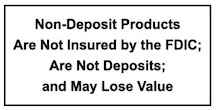2025 Economic Forecast
Forecasts of 2025 Economic Activity
The Blue Chip survey of about 50 professional economic forecasters reports one-year-ahead projections. Each forecaster’s projections are reported, but it is the “consensus,” or average among all forecasters, that garners the most attention.
The first three rows of the table below report the Blue Chip projections for 2025 for real GDP growth, CPI inflation, the unemployment rate, and the 10-year Treasury yield, as reported in December 2024. As mentioned previously, the consensus outlook shows activity slowing, but it seems that forecasters have factored in more room for economic resilience, as reflected in the following:1
- The average of the top 10 forecasts for GDP growth (most optimistic) is 2.5% while the average of the bottom 10 (most pessimistic) is only 1.9%.
- The average of the top 10 forecasts for inflation is 2.8% while the bottom 10 average is 2.1%.
- The average of the top 10 forecasts for the unemployment rate is 4.5% while the bottom 10 average is 4.0%.
- The average of the top 10 forecasts for the 10-year yield is 4.5% while the bottom 10 average is 3.8%.
| Real GDP Growth | CPI Inflation Rate | Unemployment Rate | 10-Year Treasury Yield | |
|---|---|---|---|---|
| Consensus (Average) | 2.1% | 2.4% | 4.3% | 4.1% |
| Average of Top 10 Forecasts | 2.5% | 2.8% | 4.5% | 4.5% |
| Average of Bottom 10 Forecasts | 1.9% | 2.1% | 4.0% | 3.8% |
| SOURCES: Blue Chip Economic Indicators (Dec. 10, 2024). | ||||
| NOTES: Real GDP and CPI inflation are percent change from 2024 to 2025. Unemployment rate and 10-year Treasury yield are the averages for 2025. | ||||
We forecast U.S. economic growth to slow in 2025. Our view, however, is not based on expectations of seriously deteriorating conditions but rather a healthy moderation in consumer spending that should move growth closer to the economy’s “sustainable pace” of growth.
St. Louis Federal Reserve 12-31-2024





